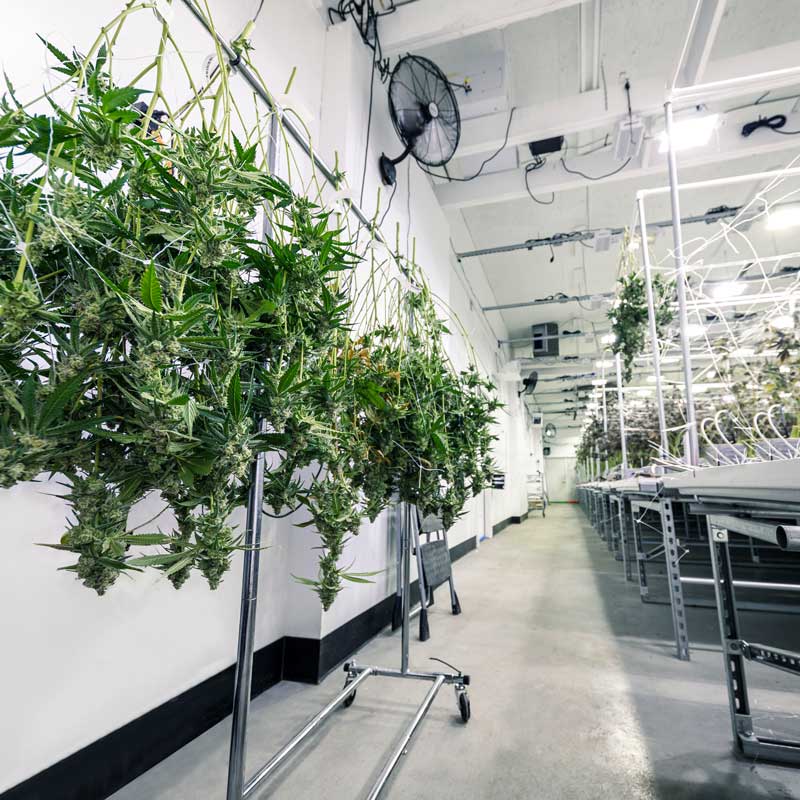Drying botanicals while being GMP compliant is critical for pharmaceutical manufacturing, and entrepreneurs need to understand the fundamentals. Understanding how to measure, control and document GMP facilities with qualified measurements is key to successful botanical drying. Understanding and controlling air distribution, wet bulb temperature, dry bulb temperature relative humidity, dew point, and vapor pressure makes it possible to maintain proper environmental conditions when drying your botanicals. In this blog post, we’ll explore the details behind each element so you can ensure your facility operates at its best potential.
Drying of Botanicals in a GMP Environment
GMP control and documentation of the drying process are critical to the herbal medicinal product’s quality, safety, and efficacy. Herbal material drying under GMP controls will reduce cross-contamination and microbial contamination by controlling relative air pressure, temperature, humidity, air flow rate, and other environmental conditions during processing.
Definition
GMP Drying is defined as reducing moisture content in plant materials using controlled temperatures and relative humidity levels while maintaining good manufacturing practices (GMP). It is essential to ensure that botanical products meet regulatory requirements for purity and potency. The goal is to reduce water activity or equilibrium relative humidity (ERH) below 0.85 without damaging the quality or integrity of the product.
Benefits
The primary benefit is improved shelf life due to reduced microbial growth potential resulting from lower water activity levels achieved through this process. Additionally, drying minimizes the risk associated with cross-contamination between batches. Finally, it can also help improve consistency between batches by providing more uniform drying times across different lots or batches, which allows for better control over final product specifications such as particle size distribution or active ingredient concentrations.
Qualified Measurements for GMP Drying of Botanicals
When drying plants, it’s important to have humidity and process documentation to ensure quality control and to stay in GMP compliance. This includes documenting the temperature, humidity, air velocity, pressure, and other conditions during the process. These measurements must be accurately recorded to ensure that all parameters meet established standards. Additionally, any changes in these parameters should be documented as well.
Controls and manufacturing requirements when drying botanicals must also be acknowledged. All equipment used in the process must be appropriately calibrated and maintained according to industry standards. In addition, the process’s environment must meet specific requirements, such as adequate ventilation and air circulation throughout the facility to prevent contamination or degradation of product quality due to improper storage or handling practices.

Pharmaceutical critical process parameters need to be considered when drying botanicals as well. These include factors such as moisture content levels, particle size distribution, water activity levels, shelf life stability tests, and microbial limits testing results which all have an impact on product safety and efficacy when it comes to pharmaceutical products made from botanical materials. Therefore, these parameters must be monitored closely during processing to remain within acceptable ranges at all times to guarantee a safe end-product for consumers’ use.
Microbial Considerations for GMP Drying of Botanicals
Good Manufacturing Practices (GMP) facilities are essential for ensuring the safety and quality of botanical products. GMP is a set of regulations that provide guidance on how to manufacture, package, store, test, and distribute products in order to meet the highest standards of safety and quality. It also includes requirements for cleanliness, temperature control, air circulation, and other environmental conditions necessary for microbial contamination prevention.
Properly calibrated systems are essential for ensuring the consistency of humidity levels throughout a facility during production cycles. This helps prevent moisture-related problems such as mold growth or product spoilage due to incorrect temperatures or relative humidity levels during processing. Additionally, proper air circulation ensures uniform drying times, which can help reduce energy costs associated with prolonged drying periods caused by inadequate airflow patterns in the facility.

Psychrometrics for Control of GMP Drying of Botanicals
Psychrometrics is the study of air-water mixtures, which are important for the drying of botanicals. The psychrometric process measures wet and dry bulb temperatures, relative humidity, specific enthalpy, dew point, and vapor pressure.
Wet bulb temperature and dry bulb temperature measurement: Wet bulb temperature (WBT) measures the amount of moisture in the air at a given time. It is measured by using a thermometer with its sensing element covered with a damp cloth or wick to evaporate water from it into the surrounding atmosphere. The WBT reading indicates how much energy must be added to saturate the air sample at that particular moment thoroughly. Dry bulb temperature (DBT) measures only the heat content in an air sample without taking into account any moisture present in it. This measurement helps determine if enough energy is available for evaporation or condensation processes to occur within an enclosed space, such as during GMP drying operations involving botanicals.
Conclusion
Drying botanicals require qualified measurements, microbial considerations, and psychrometrics to ensure the product meets quality standards. In addition, GMP facilities must be equipped with proper air distribution systems and calibrated instruments to measure wet bulb temperature, dry bulb temperature, relative humidity, specific enthalpy, dew point, and vapor pressure to accurately control the drying process. By following good manufacturing practices when drying botanicals, entrepreneurs can rest assured that their products will meet industry standards.
If you are looking for a comprehensive approach to meeting GMP requirements in everything you do, from drying botanicals to extracting them, then it’s best to be under the guidance of someone who has already done it. extraktLAB has helped numerous businesses achieve GMP compliance through our extensive knowledge of each process and how it is supposed to be managed. However, figuring it all out can be a daunting task, so check out our GMP compliance support and facility layout services so we can help you reach your compliance goals.
Get in touch with our team to request a quote, learn more about our facility design services or get help with your business plan.
We are dedicated to providing you with the best advice, quality and service in the industry.



